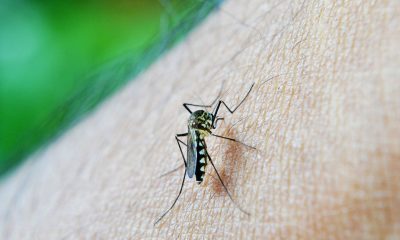Two children have been diagnosed with diphtheria of the throat in northern New South Wales (NSW). These are reportedly the Australian state’s first cases of the disease “this century.”
Authorities announced the detection of the first case in a 2-year-old child from northern NSW Saturday, according to Brisbane Times. By Sunday, the second case was reported in a 6-year-old who was a “close family contact” of the first case.
The 2-year-old is reportedly in an intensive care unit in Queensland, while the 6-year-old has also been hospitalized.
Diphtheria is a “serious infection” caused by the bacteria Corynebacterium diphtheriae, which can create toxins that can make people “very sick,” according to the U.S. Centers for Disease Control and Prevention (CDC). It can spread from person to person via respiratory droplets, such as when sneezing or coughing, or via contact with open ulcers or sores.
Before the diphtheria vaccines were introduced, the disease was the “leading cause of childhood death around the world, including in the United States,” the CDC noted. Because of immunization programs, however, the disease has become “nearly unheard of” in the U.S.
In Australia, some 95% of children aged 1 to 5 have reportedly received “all” the recommended vaccines, Brisbane Times reported.
“Diphtheria is very rare in Australia due to our longstanding childhood immunization program,” Dr. Paul Douglas, the director of North Coast Public Health, said, as per the outlet.
However, the two children who were diagnosed with diphtheria were not vaccinated. Their family members and close contacts have already received post-exposure prophylaxis, according to The Guardian.
While this is the first report of throat diphtheria in NSW since the 1990s, there have been other “less serious” cases of diphtheria affecting the skin, news.com.au reported. As the CDC explained, the symptoms of diphtheria may differ depending on the affected body part.
A diphtheria skin infection can cause ulcers or sores when it affects the skin. In these skin-related cases, the illness “rarely” causes severe disease. On the other hand, respiratory diphtheria affecting the respiratory system can cause symptoms such as mild fever, weakness, sore throat and swollen neck glands. If the toxins reach the bloodstream, they can damage the heart, kidneys and nerves.
“Even with treatment, diphtheria can be deadly, especially in children,” the Mayo Clinic said, adding that it is fatal 5-10% of the time.
“If you’re not sure whether your child has been vaccinated against diphtheria, schedule an appointment. Make sure your own vaccinations are current,” it said further.
















